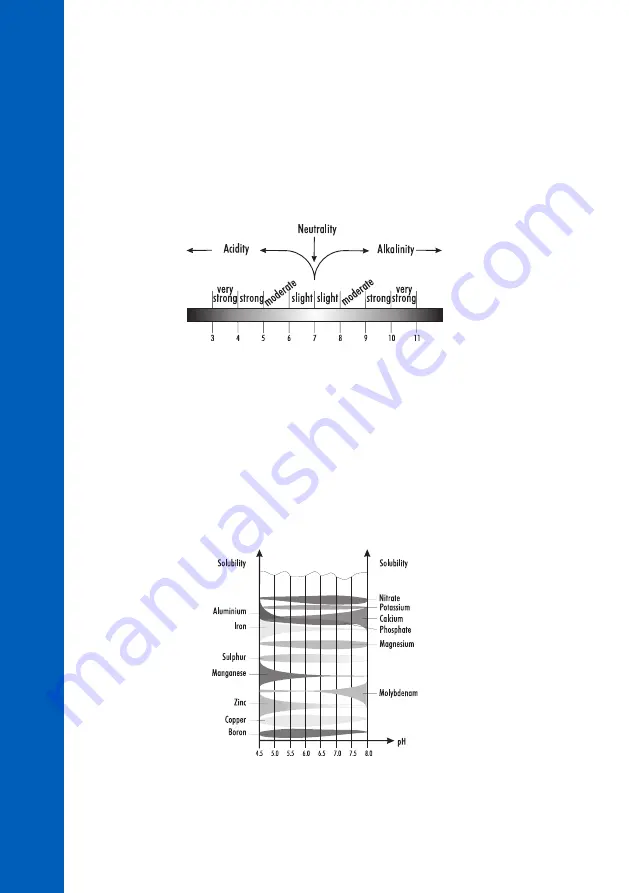
12
SOIL pH
pH is the measure of the hydrogen ion concentration [H
+
]. The pH scale goes from 0 (very acidic) to
14 (basic) with pH 7 being neutral. Soil can be acid, neutral or alkaline.
Figure 1
shows the relationship between the scale of pH and types of soil. Most plants prefer
a pH range from 5.5 to 7.5; but some species prefer more acid or alkaline soils. Nevertheless,
every plant has a target for optimum growth.
Fig. 1.
Types of soil according to the pH value
pH strongly influences the availability of nutrients and the presence of microorganisms and plants
in the soil.
For example, fungi prefer acidic conditions whereas most bacteria, especially those supplying
nutrients to the plants, have a preference for moderately acidic or slightly alkaline soils. In fact, in
strongly acidic conditions, nitrogen fixing and the mineralization of vegetable residual is reduced.
Plants absorb the nutrients dissolved in the soil water and the nutrient solubility depends largely on
the pH value. Hence, the availability of elements is different at different pH levels (see
Figure 2
).
Fig. 2.
Solubility of the elements according to varying pH
SOIL pH










































